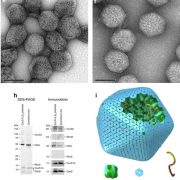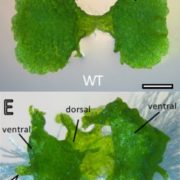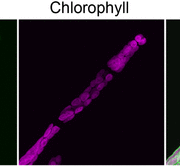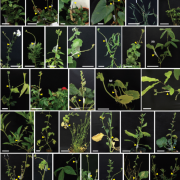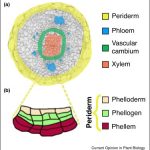Review: Interplay between turgor pressure and plasmodesmata during development (J Exp Bot)
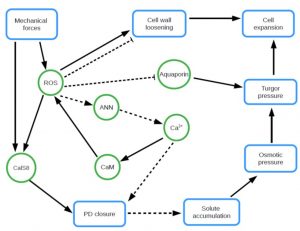 Plasmodesmata, small cytoplasmic channels connecting adjacent cells, allow small molecules to move and redistribute information and resources. Plasmodesmatal aperture is highly regulated, which is crucial to development and defense. Hernández-Hernández et al. review the contribution of turgor pressure to stomatal aperture. Turgor pressure that builds up within cells is largely due to the movement of water into a compartment with more solutes, causing that compartment to build up pressure. Turgor contributes to the stomatal aperture, cell expansion, phloem transport, and has been implicated in lateral root development. The authors review the structure and function of plasmodesmata and how the movement of solutes is controlled through changes in aperture, resulting in part from callose deposition at the neck. Finally, they review evidence for the bidirectional interactions between turgor pressure and plasmodesmatal permeability; for example, a difference in turgor pressure between cells depends on low plasmodesmatal permeability, and plasmodesmatal permeability responds to differential turgor pressure, possibly involving calcium and reactive oxygen species signals. They conclude with a summary of outstanding questions. (Summary by Mary Williams) J. Exp. Bot. 10.1093/jxb/erz434
Plasmodesmata, small cytoplasmic channels connecting adjacent cells, allow small molecules to move and redistribute information and resources. Plasmodesmatal aperture is highly regulated, which is crucial to development and defense. Hernández-Hernández et al. review the contribution of turgor pressure to stomatal aperture. Turgor pressure that builds up within cells is largely due to the movement of water into a compartment with more solutes, causing that compartment to build up pressure. Turgor contributes to the stomatal aperture, cell expansion, phloem transport, and has been implicated in lateral root development. The authors review the structure and function of plasmodesmata and how the movement of solutes is controlled through changes in aperture, resulting in part from callose deposition at the neck. Finally, they review evidence for the bidirectional interactions between turgor pressure and plasmodesmatal permeability; for example, a difference in turgor pressure between cells depends on low plasmodesmatal permeability, and plasmodesmatal permeability responds to differential turgor pressure, possibly involving calcium and reactive oxygen species signals. They conclude with a summary of outstanding questions. (Summary by Mary Williams) J. Exp. Bot. 10.1093/jxb/erz434


